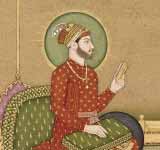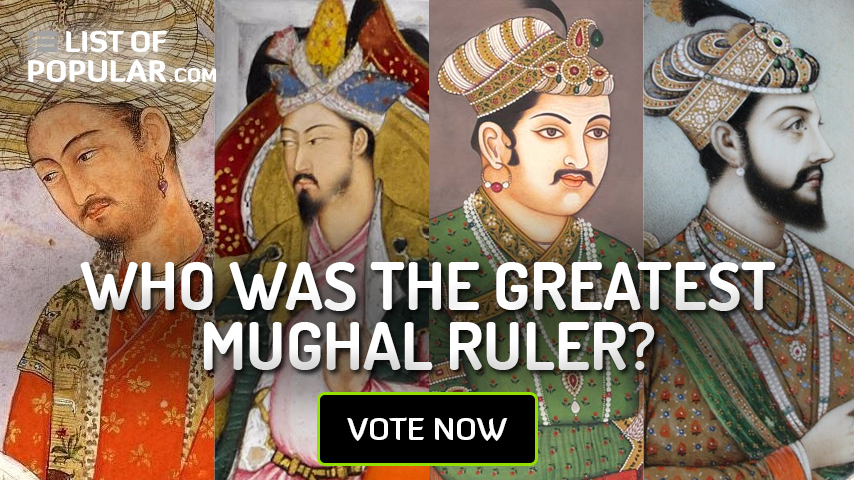1. Akbar the Great

1556–1605Jalal-ud-din Muhammad Akbar was the third ruler of the Mughal dynasty of the Timurid lineage. Akbar is also known as Akbar-e-Azam (ie Akbar the Great), Emperor Akbar, Mahabali emperor. Emperor Akbar was the grandson of Zahir ud din Muhammad Babur, the founder of the Mughal Empire, and the son of Nasir ud din Muhammad Humayun and Hamida Bano. By the end of Akbar's rule in 1605, the Mughal Empire consisted mostly of northern and central India and was one of the most powerful empires of the time. Akbar was one of the emperors who received equal love and respect from both Hindu and Muslim sections. He established a religion called Din-e-Ilahi to reduce the distance between Hindu-Muslim sects. In his court, there were more Hindu chieftains than Muslim chieftains. Akbar not only ended the Jazia tax imposed on Hindus, but also did many such works, due to which both Hindus and Muslims became his admirers.
2. Babur

1526–1530Zahir ud-Din Muhammad Babur, known as Babur was an emperor and founder of the Mughal Empire of India, first Mughal Ruler in India. He was a descendant of the Turkish - Mughal conqueror Tamerlán. Babur, which means "lion", was born in the city of Andiján, in present-day Uzbekistan, on February 14, 1483. He was the son of Omar Sheikh, king of Ferganá and of Qutlugh Nigar Janum, daughter of the Khan of Mogolistan and a direct descendant of Genghis Khan himself. When his father died, Babur ascended the throne in 1495 when he was only 12 years old. Although some of his uncles attempted to overthrow him, Babur remained steadfast as sovereign. He attacked India 5 times from 1519 to 1526 AD. He laid the foundation of the "Mughal dynasty" by defeating "Ibrahim Lodi", the last sultan of the Delhi Sultanate in the Panipat. He made his kingdom successful by winning Khanwa in 1527, Chanderi in 1528 and Agra in 1529. He died in 1530 AD.
3. Shah Jahan

1627–1657Shah Jahan was the fifth Mughal emperor. Shah Jahan was very popular during his period due to his justice and splendor. But in history, his name is not taken only for this reason. Shah Jahan's name is taken as a lover who built Taj Mahal, the world's most beautiful building for his wife Mumtaz Begum. After the death of Emperor Jahangir, he was chosen as the heir to the Mughal throne at an early age. After the death of his father in 1627, he sat on the throne. His reign has been called the golden age of Mughal rule and the most prosperous period of Indian civilization. Shah Jahan expanded the military to crush a Muslim uprising in Ahmadnagar. He also managed to conquer territory on the Rajputs. He moved the capital from Agra to Delhi, where he built beautiful palaces and a beautiful mosque. At the same time he had the Taj Mahal built in Agra as a mausoleum for his wife Mumtaz Mahal.
4. Aurangzeb

1658–1707Abul Muzaffar Muhiuddin Muhammad Aurangzeb Alamgir was commonly known as Aurangzeb or Alamgir (the royal name given by the public which means world conqueror). He was the sixth Mughal ruler to rule India. His reign lasted from 1658 until his death in 1707. Aurangzeb ruled the Indian subcontinent for more than half a century. He was the longest reigning Mughal ruler after Akbar. During his lifetime, he tried his best to expand the Mughal Empire in Southern India, but after his death, the Mughal Empire started shrinking. The Mughal Empire reached the peak of its expansion under Aurangzeb's rule. He was perhaps the wealthiest and the most powerful person of his time, who through his conquests in South India, spread the Mughal empire in twelve and a half million square miles and ruled over 15 crore people, which was 1/4 of the world's population.
5. Humayun

1530–1540Humayun was a Mughal ruler. Nasir-ud-Din Mu?ammad Humayun was the son of the first Mughal emperor Babur. Although he did not have an empire for many years, Humayun's contribution to the foundation of the Mughal Empire. After Babur's death, Humayun took over the throne of India in 1530 and his half-brother Kamran Mirza took the rule of Kabul and Lahore. Babur divided the kingdom before he died so that the two brothers would not fight later. Kamran later became Humayun's tough opponent. Taking advantage of the instability of the empire, undermined by the intrigues of the court, the rajas under his father rebelled. In 1531 Humayun led his army to the Kalinjar fortress. But due to the shortage of funds from the imperial treasury, he accepted the strong ransom offered and lifted the siege. Humayun then set out to subdue the Afghans settled in Bihar whom he defeated in 1532. In December of that same year, he managed to subdue Sher Shah Suri's troops.
6. Bahadur Shah Zafar

7. Jahangir

1605–1627Jahangir was the eldest son of Akbar. Murad and Daniyal were his younger brothers. Murad and Daniyal had died because of alcoholism in the father's life. Jahangir was first married in 1585 AD to Manabai, daughter of King Bhagwan Das of Amer and sister of Man Singh. After this, he was married to Jagatgosai, daughter of Uday Singh, the king of Marwar. After the death of Salim Akbar, Nuruddin became the Mughal emperor by the surname of Mohammad Jahangir. Several useful reforms were implemented in 1605 AD. Revoked sentence of cutting off ears, nose and hands etc. Closure of liquor and other intoxicating items. Removed many illegal activities. The jibh of animals was discontinued on the main days. In 1605, his eldest son Khusrau revolted. And from Agra, he reached Punjab. Jahangir defeated him. Jahangir conquered Kanagarh in 1620 AD. Jahangir's time is called the golden period of painting.
8. Muhammad Ibrahim

1720Shahzad Sultan Muhammad Ibrahim Mirza - Mughal prince of the dynasty of Babur, the youngest son of Prince Rafi ush Hashanah and grandson of Mughal emperor Bahadur Shah I. Titular emperor of the Mughal Empire from October 15 1720 to November 13, 1720. On October 15, 1720, Prince Muhammad Ibrahim was released from prison by the Sayyid brothers and placed on the imperial throne. The Sayyid brothers appointed him to succeed their elder brother, Padishah Shah Jahan II (1696-1719), who died childless on September 19, 1719. Sayyid Khan Jahan, governor of Delhi, fearing the reputation of Ibrahim with his cruel character, replaced the latter with his cousin, Roshan Akhtar Muhammad Shah (1702-1748), the son of Khujist Prince Akhtar Jahan Shah. He was defeated by Muhammad Shah at the Battle of Hasanpur and dethroned on November 13, 1720. Muhammad Ibrahim was sent back to the prison in the Shahdhanabad fortress. His reign was short-lived, "like a drop of dew on a blade of grass". Muhammad Ibrahim died on January 30, 1746 at the age of 42.
9. Rafi ud-Darajat

10. Bahadur Shah I

1707–1712Bahadur Shah I (Muazzam Shah) was born on October 14, 1643, in Burhanpur. After the death of Mughal emperor Aurangzeb on 3 March 1707, his eldest son Muhammad Azam Shah ascended the Mughal throne, but on 19 June 1707 Azam Shah was removed from the throne and became himself a Mughal emperor by the name of Bahadur Shah I. He remained the Mughal emperor until his death (1707–12). Bahadur Shah, called 'Shahzada Muazzam', was the second son of Emperor Aurangzeb. Shahzada Muazzam became the likely successor of Aurangzeb after his father's brother and rival Shahshuja joined the elder brother. Bahadur Shah I is also known as 'Shah Alam I'. On 8 June 1707 AD, a battle was fought near Janju near Agra, in which Bahadur Shah won. In this battle, Guru Govind Singh's sympathies were with his old friend Bahadur Shah. It is said that Guru ji supported and helped Bahadur Shah in the battle of Janju by his soldiers. This led to the victory of Emperor Bahadur Shah. The emperor called Guru Gobind Singh ji to Agra.
11. Ahmad Shah Bahadur
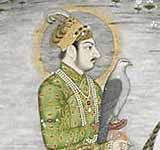
12. Akbar Shah II
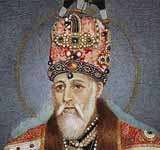
13. Jahandar Shah
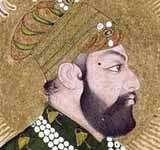
1712–1713Jahandar Shah was the Mughal emperor of India. It ruled from 1712–1713. Bahadur Shah's eldest son Jahandarshah was born in 1661. After the death of the father, he had to fight with his brothers for power. Mir Bakshi Zulfiqar Khan assisted him. One of his brothers Azim al-Shan was killed in a battle near Lahore. Jahandar succeeded in becoming emperor by removing the remaining two brothers Jahanshah and Rafi-al-Shan. Jahandarshah of luxuriant nature neglected the entire state. In 1712 Abdulla Khan, Hussain Ali Khan and Farrukhsiyar traveled against him from Patna. Jahandarshah collided in Agra. Defeated, he took refuge in Delhi with Zulfikar Khan's father Asadakhan. Asadakhan imprisoned him in the Delhi Fort. Farrukhsiyar killed him as soon as he emerged victorious.
14. Shah Alam II
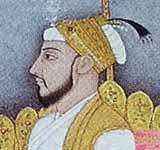
15. Rafi ud-Daulah
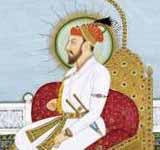
16. Muhammad Azam Shah
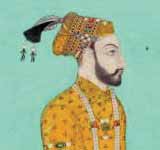
1707Muhammad Azam Shah, the eldest son of Aurangzeb Alamgir, badshah of the Mughal Empire under the name Badshah-i-Mumalik Abul-Faiz Qutb-ud-Din Muhammad Azam Shah-i-Ali Jah Gazi. He was also the grandson of the fifth Mughal Emperor Shah Jahan. Azam Shah and his two sons, Sultan Muhammad Bidar Bakht and Shahzada Wala Jah Bahadur, were later deposed and sentenced to death by Azam Shah's eldest stepbrother, Prince Shah Alam (later crowned Bahadur Shah I), during the Battle of Jajau on June 8, 1707.
17. Muhammad Shah
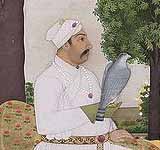
1719–1748Naseeruddin Muhammad Shah was the Mughal emperor from 1719 to 1748. He is also known as Mohammad Shah Rangeela. He belonged to a very colorful class and was very fond of dancing. At that time many foreign powers were eyeing the Mughal Sultanate because the Mughals were very weak at that time. Over the years, the Mughal Empire was weakened due to many emperors sitting on the throne, due to which many foreign powers were spreading their feet in India. During the reign of Shah, in 1739, Nadirshah invaded India and spread terrible loot in Delhi and withdrew from Delhi by looting the Takht-e-Tauj, including the Kohinoor diamond. Mohammed Shah Rangeela emerged as a very weak ruler. There were many foreign invasions during his reign.
18. Alamgir II
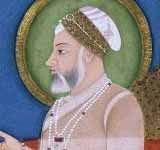
1754–1759Aziz-ud-din Alamgir II was the Mughal Emperor in India from 3 June 1754 to 11 December 1759. He was the son of Jahandar Shah. Alamgir II gained power in 1754 with the help of Imad ul Mulk, who was then a very powerful Mughal minister. He was the son of Jahandarshah and had spent his entire life in prison, due to which he did not have the ability to hold power or control ministers and he did not have any military knowledge of any kind. Due to which, with the help of Imad ul Mulk, he had to do all the work. Alamgir II was a very weak and far-sighted ruler. In 1756 he sought help from the French East India Company to avoid the influence of the Marathas. At that time, the 7-year war that raged all over the world, the Mughals also had a contribution in which many countries were included like Denmark, Portugal, etc. The Mughals were getting a chance to fight in a global war for the first time.
19. Muhi-ul-Millat
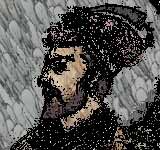
20. Farrukhsiyar
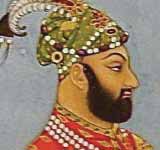
21. Nikusiyar
